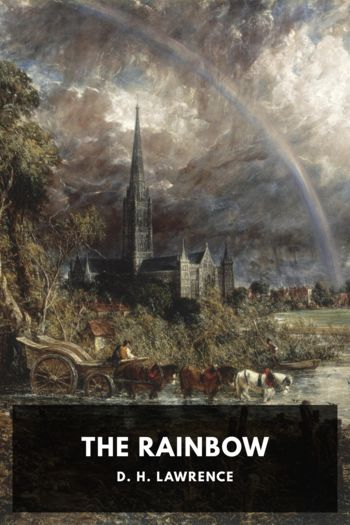A State of Fear: How the UK government weaponised fear during the Covid-19 pandemic, Laura Dodsworth [the two towers ebook .txt] 📗

- Author: Laura Dodsworth
Book online «A State of Fear: How the UK government weaponised fear during the Covid-19 pandemic, Laura Dodsworth [the two towers ebook .txt] 📗». Author Laura Dodsworth
These people all died, so it does it matter how and when the deaths are reported? Am I splitting hairs? Lumpy data produces ‘hot spot’ days, creating panic and driving (or maybe justifying?) policy decisions. And maybe that is the plan. After all, the low days were not reported the same way.
The government’s cost-benefit analysis of lockdown published on 30 November didn’t include the use of QALYs (Quality Adjusted Life Years). This was a strange omission, as they are the bread and butter metric of the NHS. The average age of death with Covid is 82.3 years6 – one year more than the average life expectancy in Britain. The NHS normally allows up to £30,000 for each QALY that a treatment could save. Depending on how many QALYs lockdown saved, the cost is £96,000 to £1.97 million per QALY according to a report by Civitas.7 And that’s quite generous because it might be that lockdown saved no lives at all.
The precautionary principle behind lockdown has been ideological and may be proven, in the end, to be more harmful than doing nothing, because the cost-benefit analysis didn’t contain the numbers.
Here are some examples of the dodgy data and mendacious metrics wielded during the Covid epidemic.
THE IMPERIAL COLLEGE MODEL
Neil Ferguson’s Imperial model predicted that there would be over 500,000 deaths in the UK and 2.2 million deaths in the US if there were no measures to suppress the virus. Described in an article in The Telegraph as ‘the most devastating software mistake of all time’,8 the modelling used outdated code. However, that insight was not gained easily. At a time when there had probably never been such a need for scrutiny, there was remarkably little. The paper by Imperial was not peer-reviewed and calls by scientists to inspect the code were ignored for weeks. When the code was released it was not the original, but had been modified by teams from Microsoft and Github. The delay was unacceptable given the level of public importance and interest.
The doom-laden modelling grabbed headlines around the world and is credited with some of the responsibility for shifting policies on lockdown.
Aside from the dismal coding, was it robust? Models based on assumptions in the absence of data can be over-speculative and open to over-interpretation. Professor John Ioannidis of Stanford University issued a strong warning9 to disease modellers to recognise the severe deficiencies in reliable data about Covid-19, including assumptions about its transmission and its essentially unknown fatality rates. For instance, the model assumed no existing immunity to Covid. Since then, six studies have shown T-cell reactivity (which gives protection) from previous coronaviruses in 20% to 50% of people with no known exposure to Covid.10
In 2000 Ferguson predicted there would be up to 136,00011 cases of Creutzfeldt-Jakob disease in the UK. In fact there were 178 over 20 years.12 In 2001, Ferguson’s modelling led to the policy of ‘contagious culling’ (culling healthy animals on neighbouring farms) which led to 6.5 million cattle, sheep and pigs being slaughtered, economically devastating Britain’s farmers. A report entitled Use and abuse of mathematical models: an illustration from the 2001 foot and mouth disease epidemic in the United Kingdom13 strongly concluded that ‘the slaughter that took place was grossly excessive’ and that ‘the rift between the models and the practical reality of implementation may be so huge as to make the models irrelevant’. In 2005, Ferguson said that up to 200 million people could die worldwide from bird flu. They didn’t.
MP Esther McVey neatly argued that the Imperial modelling should not be considered infallible by pointing out that 2,700 prisoners were predicted to catch Covid and die, yet only 47 did. As she said in January 2021: ‘There is no better example of the scaremongering to drive government policy they wanted to see from the so-called experts than the predictions on prisoner deaths. I appreciate that these estimates aren’t an exact science but the difference between a prediction of 2,700 to the reality of 47 is embarrassing to say the least.’14
At the time of publication the modellers on SPI-M have predicted a ‘pessimistic but plausible’ third wave in the summer of 2021, resulting in a further 59,000 deaths.15 Models are only as good as their ingested data and this model reportedly under-estimated vaccine efficacy, herd immunity and did not allow for the seasonality of a respiratory virus. So, what is the point?
Model reliability doesn’t seem to need to be proven. There are no penalties for being over-cautious and getting it wildly wrong. And despite his track record, Ferguson et al are still producing models for the UK government, terrifying people and unleashing dire consequences on the way.
PUBLIC HEALTH ENGLAND DEATH DATA
Under Public Health England’s original system, a Covid death was anyone who tested positive for Covid and then died of anything at any time. So, if someone was run over by a bus, their death would be counted as a ‘Covid death’ if they had tested positive for Covid at any point in the past. No further explanation is needed about how wrong that is, and how it would inflate the death figures.
The team at the Oxford Centre for Evidence-Based Medicine pointed out the anomaly and Matt Hancock, the Health Secretary, ordered an inquiry. Dangerously poor-quality data from Public Health England was misleading the





Comments (0)